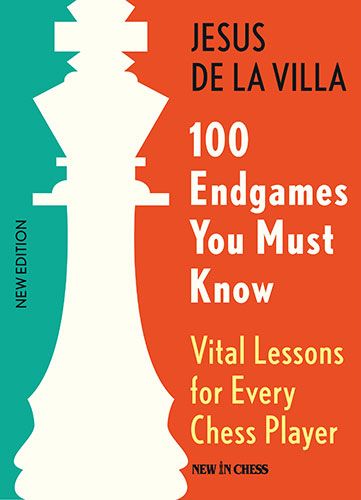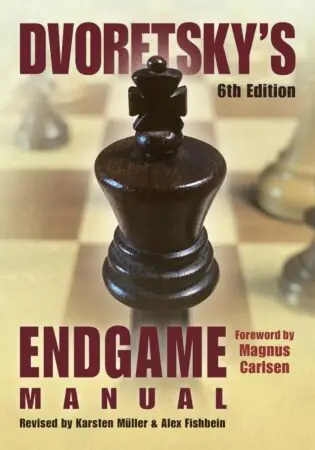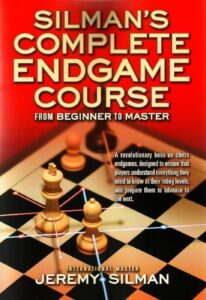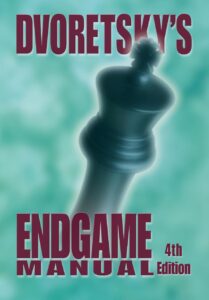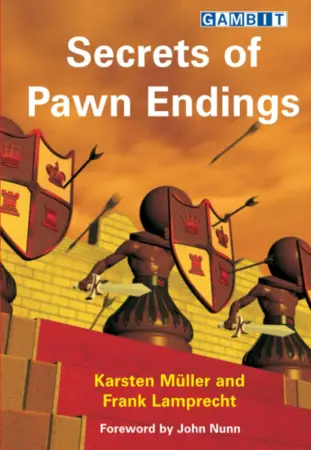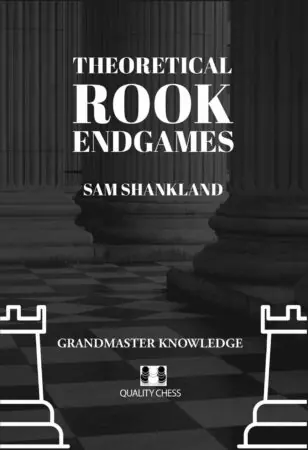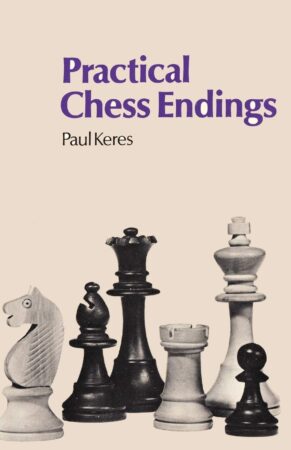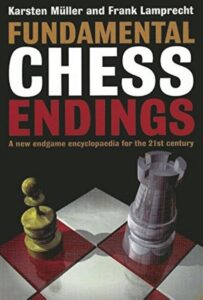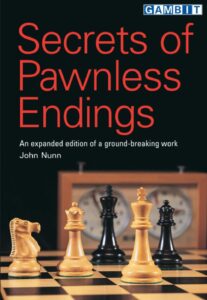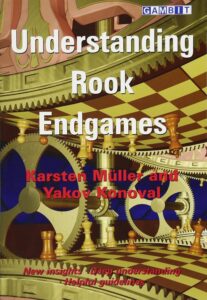100 Endgames You Must Know has become the most popular endgame book of all time alongside Dvoretsky’s Endgame Manual. It covers every important theoretical endgame in a simple, easily understandable way, with clear explanations, covering key ideas, patterns and concepts, making it a truly great resource for players of all levels. As opposed to Doretsky’s Manual, it’s suitable for people below master level. That makes it less useful, but it also makes it a great introduction to endgame play. While most players would struggle with DEM, De la Villa’s book will be perfect for anyone below 2200 FIDE.
It starts with an introduction to endgame play and a test on the basics, which is not for advanced players, so even complete beginners are given a clear way forward. It then goes over endgames logically grouped into chapters, each on an important segment, and each covering a certain combination of pieces. The chapters include Knight vs. pawn, Queen vs. pawn, Rook vs. pawn, Opposite colored bishops, and every other important type of endgame.
What’s unique about it is that it only covers endgames that actually happen in real games. Perhaps it lacks those endgames that can hardly ever happen, but that will be of little consequence for a vast majority of players. It covers endgames that happen all the time, on all levels, and that every player must learn how to navigate well in order to win (or save) endgames.
The best thing about 100 Endgames You Must Know are the explanations of ideas and concepts. Each chapter is accompanied by clear instructions of what to do, what to avoid, how to approach a specific type of endgame, and common problems one might encounter while playing them. That makes the book wonderful, and it’s what I like about it the most. In addition to explaining the theory, it teaches you how to use that knowledge and transform it into an applicable skill you can use over the board.
There are numerous books which cover certain parts of theoretical endgames better or in more detail. DEM, or Silman’s Endgame Course are among those, but very few books cover everything of importance well enough so that they can be used and read by themselves, without having to use any additional resources. In short, this book is enough to make you a good theoretical endgame player!
It doesn’t cover complex endgames, just the theoretical ones, so you should accompany it either with separate volumes on different types of complex endgames, or a textbook on complex endgames, such as Shereshevsky’s Endgame Strategy. I have been using 100 Endgames You Must Know as an index, as reference whenever I play an ending over the board. If I didn’t understand what to do, I would check the chapter on the type of endgame I played and try to figure out where I’d gone wrong. I read it as an actual book the first time I got it, but, trust me, endgame books aren’t novels, and there’s a huge deal of difference between reading a chess book and being able to apply what it teaches in tournament play. I would therefore advise you to play the endgames out against a human or an engine in order to learn them properly.

